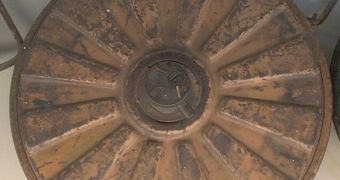There are an estimated one hundred million unexploded land mines around the world. Placing and arming them is relatively inexpensive and simple, the process of detecting and removing them is typically expensive, slow and dangerous.
Small size antipersonnel mines are the most dangerous, because they are very small, made almost entirely of non-metallic materials (specifically to avoid detection from metal detectors), are located in large areas, from where they are harder to remove than those in roads.
Cost is one of the main obstacles to clearing mines, especially in poor, war ravaged countries that barely afford some food for the citizens, if any. One of the most used methods for finding unexploded landmines is to beam a low-frequency sound wave into the ground - which gently vibrates any buried mines - along with a radar beam.
As the radar beam is reflected off the vibrating mines, it comes back toward a detector, which records their various return frequencies. Unfortunately, this kind of radar sensors cost many hundreds of dollars, so there is a definite need for cheaper detection techniques.
Now Gregg Larson and James Martin at the Georgia Institute of Technology in Atlanta have shown that these vibrations can also be detected using $65 microphones suspended 1 centimeter above the ground. If these applications could become commercially available, they could slash the cost of clearing mines.
Readily available microphones were used as "near-ground sensors to measure the acoustic pressure and the vertical pressure gradient of evanescent air-acoustic waves associated with audio-frequency seismic waves," says an article on the theme, published in The Journal of the Acoustical Society of America.
"Measurements in close proximity to the surface and the use of waveguides were found to improve the microphone signal's quality, the comparison of its seismic sensitivity to its sensitivity to propagating sound (ambient acoustic noise and nonseismic reverberation)."
"Landmine images formed using microphone data collected in a laboratory experimental model clearly locate buried inert landmines but exhibit more clutter than images of the same objects formed with seismic displacement data collected using other techniques,"
It seems the technique still needs some refining, but it already shows a lot of potential in finding a solution for a problem that is responsible for more casualties than some of the wars themselves.

 14 DAY TRIAL //
14 DAY TRIAL //